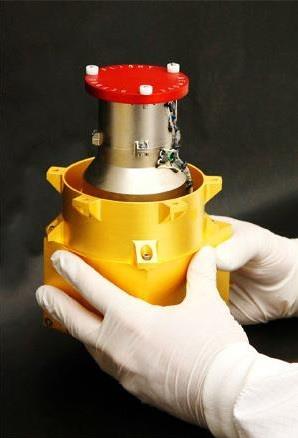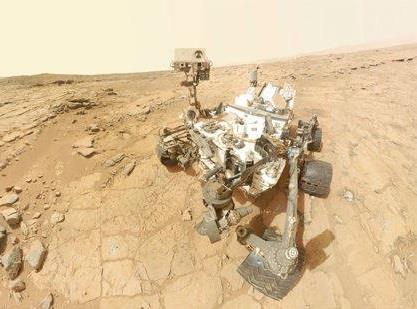May 31, 2013
LOS ANGELES: Astronauts traveling to and from Mars would be bombarded with as much cosmic radiation as they'd get from a full-body CT scan about once a week for a year, researchers reported on Thursday.

Handout NASA photograph shows a radiation assessment detector prior to installation on Nasa's Mars Curiosity rover.
May 31, 2013
LOS ANGELES: Astronauts traveling to and from Mars would be bombarded with as much cosmic radiation as they'd get from a full-body CT scan about once a week for a year, researchers reported on Thursday.

Handout NASA photograph shows a radiation assessment detector prior to installation on Nasa's Mars Curiosity rover.
That dose is enough to raise their cancer risk by about 3 percent, but experts caution that there are many uncertainties about the space environment's effects on the body.
As plans for deep space exploration ramp up, radiation is a big concern — from high-energy galactic cosmic rays spewed by distant supernova explosions to sporadic bursts of charged particles hurled by the sun. Earth's magnetic field helps to deflect much of that harmful radiation.
The US space agency, NASA, aims to send a crew to orbit the red planet by the mid-2030s. Private outfits like Inspiration Mars — backed by NASA engineer-turned-space tourist Dennis Tito — are seeking volunteers for a Mars flight.
There have been previous efforts to gauge the radiation risk for future Mars travelers, but the best estimate is coming from NASA's Curiosity mission. Tucked inside the rover when it launched in 2011 was a radiation sensor that took readings during the 8 1/2-month cruise to Mars.
From those figures, scientists calculated a spacefarer's radiation exposure for a quicker six-month voyage in a similarly shielded spacecraft. Roundtrip: about 662 millisieverts. That's a sizable chunk of an astronaut's career cap of 1,000 millisieverts which many international space agencies use to limit the accumulated radiation dosage in space.
The dose is similar to getting a full-body CT scan every five or six days, said lead researcher Cary Zeitlin of the Southwest Research Institute in Colorado.
The estimate doesn't include time spent on the Martian surface.

(Handout NASA composite image shows a self-portrait of Nasa's Mars Curiosity rover)
The analysis appears in Friday's issue of the journal Science. The amount of radiation likely won't change unless there's a rocket engine that can speed up the interplanetary ride, researchers said.
"You want to get there as quickly as possible" to reduce radiation exposure, said Don Hassler, scientist in charge of the radiation instrument aboard Curiosity.
The radiation dose on a Mars trip would be higher than what crew members inside the International Space Station typically face — about 200 millisieverts per year. By contrast, people on Earth are typically exposed to about 3 millisieverts a year.
Curiosity flew to Mars during a period of low to moderate solar activity. A manned mission that launches during a solar flare or storm would encounter more radiation.
Nasa engineers are testing propulsion systems and researching ways to reduce radiation exposure on a Mars flight. Among the possibilities: Have astronauts wear a deployable shield resembling a heavy winter coat or have them hunker down in a storm shelter aboard the spacecraft during periods of high solar activity.
"Before we can send astronauts there, we need to understand the environments and hazards that they would face," said Chris Moore, deputy director of advanced exploration systems at Nasa headquarters.
Since landing near the Martian equator last summer, Curiosity has continued to track radiation as it rolls across the dusty surface toward its eventual mountain destination. The rover has turned up the best evidence yet of an ancient watery Mars.
Courtesy: AP







































































































